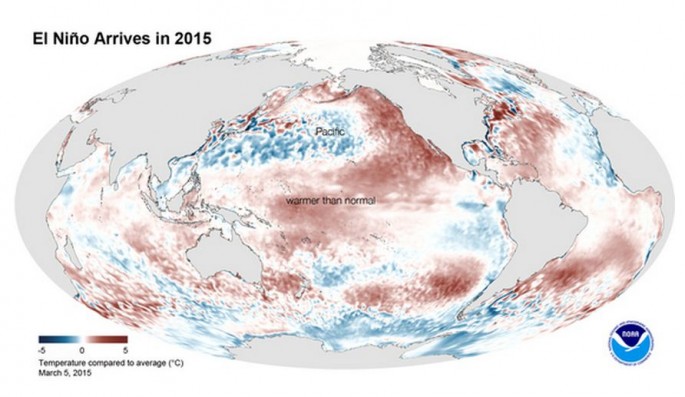China’s top climate experts warn that the impact of El Niño on the Chinese mainland is expected to last until the end of this year, resulting in longer and stronger typhoons.
Ding Yihui, an academic with the Chinese Academy of Engineering and a climate change adviser at the China Meteorological Administration, said that this year's El Nino will have a greater effect on China that could be felt up until spring next year.
El Nino will disrupt typhoon patterns, with the typhoons that affect China being stronger and the season spread over a longer period, Ding told reporters at a media conference on Monday.
"The typhoons will come from further south in the ocean, and be more intense," he added.
A cyclical phenomenon associated with the warming of sea-surface temperatures in the Pacific, El Nino can cause strong rainfall in south China and drought-like conditions in the north.
However, experts say that the latest El Nino will not match the intensity of the 1997-98 weather pattern, which led to massive flooding along the Yangtze, Songhua, and Nenjiang rivers, resulting in thousands of fatalities.
Both the Songhua and Nenjiang rivers, located on the country's northeast, are highly likely to see major flooding in August and September, Ding said, noting that the impact of El Nino is most noticeable in the second year of the cycle.
Duan Yihong, president of the Chinese Academy of Meteorological Sciences, said at the briefing that typhoons typically originate in the South China Sea in years where there is an El Nino and that precipitation from a single typhoon has significantly risen in the past decade.
Ding warned that cases of extreme weather have increased in urban areas amid China's intensive urbanization drive over the past several decades.
Rainfall in urban areas is becoming more intense and is now more difficult to forecast due to the "urban heat island" effect, wherein a metropolitan area is warmer than its surroundings, he said.
Flooding has also been reported in a number of cities this year, including Shanghai, Wuhan and Nanjing, due to increased rainfall.
Zhang Jiatuan, a spokesman with the State Flood Control and Drought Relief Headquarters, said at a news conference in May that over 300 of China's 657 cities did not comply with national standards for flood prevention in urban areas, and more than 90 percent of older urban areas failed to meet even the lowest criteria for flood prevention.






















